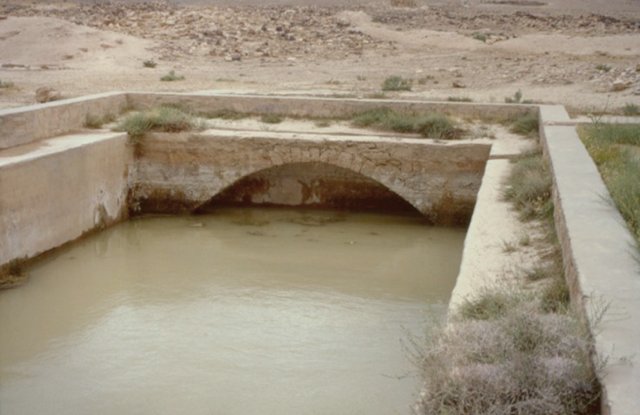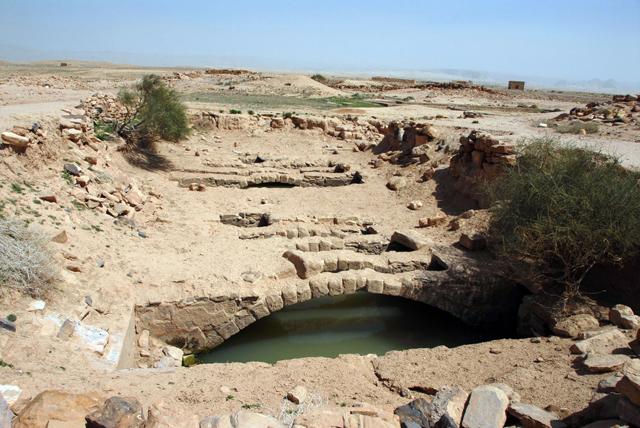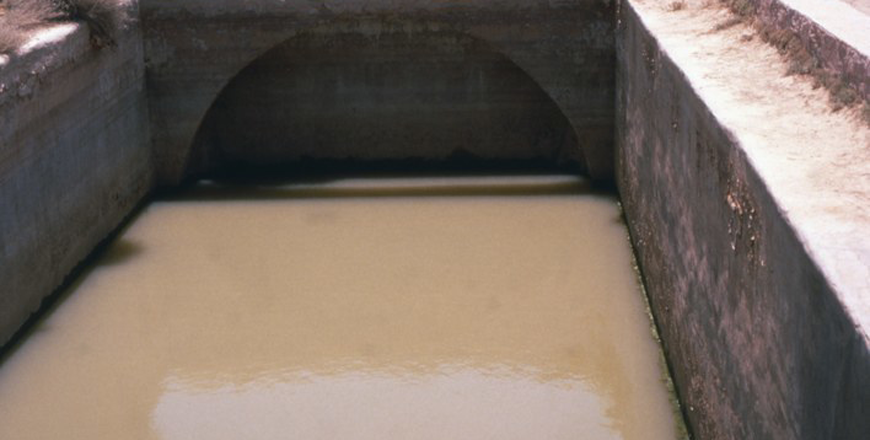You are here
Mediterranean Influences: Deep dive into Nabataeans’ sophisticated hydraulic systems
By Saeb Rawashdeh - Jan 17,2024 - Last updated at Jan 17,2024

A Nabataean water reservoir at Hawara in southern Jordan (Photo courtesy of ACOR)
AMMAN — Due to the extremely dry environment of the Hisma Desert in Southern Jordan, ancient Nabataeans used to collect water for their settlements by building huge cisterns and an aqueduct, connecting the Shara Mountains and Humayna (Hawara). Hawara was established by Nabataean King Aretas IV in the 1st century BC, prompted by the sophisticated water-supply systems, providing an ideal context for settlement flourishing.
“Essentially a colony of Petra, Hawara was located on the King’s Highway, which was well suited to pastoralism, agriculture and trade, enabling the small Nabataean settlement to subsist under Roman, Byzantine and Abbasid occupiers,” noted John Oleson from the University of Victoria.
Hawara’s complex water-supply system included 27km of aqueduct, five reservoirs, 57 cisterns and three containment dams, along with a few wadi barriers and terraced fields. Scholars thoroughly evaluated the historical and technological context from the Nabataean through the Early Islamic periods. The regional system was mostly created by the Nabataeans and the original design functioned almost without change across 800 years.
“This remarkable stability and effectiveness raises questions about Nabataean hydraulic technology. Was there a distinct repertoire of techniques and structures that is recognisably Nabataean? If so, did all these techniques originate from the Nabataeans themselves as they gradually sedentarised in the 2nd century BC?” asked Oleson.
“I have to emphasise that the variety of environmental conditions across Nabataean territory presents some problems for any hypothesis of a united Nabataean technology,” Oleson said, adding that the northern portion of the kingdom, was relatively well-watered and endowed with agricultural land.
Furthermore, this region was also rich in traditions of water management and water supply that originated as early as the Bronze Age and were modified or supplemented by various regional cultures through the Hellenistic period.
“The stony capital city of Petra enjoyed water resources exceeding by far the others in the region,” Oleson said, reminding that the site of Petra receives only 40mm of precipitation a year, but Wadi Musa higher up to the east receives 177mm, and the run-off flows, for the most part, through Petra.
In addition, the abundant spring of ‘Ain Musa and several lesser springs flow from the high stratum of limestone down towards the settlement centre.
“Other aspects of Nabataean hydraulic technology can be traced to developments during the Hellenistic Aegean. It is likely, for example, that Nabataean engineers borrowed the idea of long-distance terracotta pipelines from an outside source, and applied specific principles to the conduits that brought spring water to Petra,” Oleson speculated, adding that possible nearby models include the pipeline built in the early 1st century BC to serve the Hasmonean and Herodian Palace complexes at Jericho and Cyprus, but these pipelines were buried, small in scale and not easily seen.
Having their merchant colonies all around the Mediterranean Basin the Nabataeans were able to study different kinds of hydraulics and water-supply systems.
“The Nabataean water infrastructure was most likely modelled on the long-distance terracotta pipelines built to serve the citadel of Pergamon in the 3rd century BC. Since the Pergamon pipeline climbed the slope above ground, Nabataean merchants or mercenaries in the area could easily have noted the impressive hydraulic installation,” Oleson highlighted.
A particularly striking example of Hellenistic techniques adopted by the Nabataeans is the built or rock-cut cistern roofed with slabs carried on cross-arches, which they adopted enthusiastically through the 1st century BC.
“Philon of Byzantium describes this roofing technique in the 3rd century BC in the context of military architecture, then a clever engineer applied the system to roofing rectangular cisterns on the arid Delos island,” Oleson said, noting that the technique is quite rare for cisterns elsewhere in the Hellenistic world, although it had the advantage of allowing roofing without the use of long timbers as supports.
This was an obvious advantage for applications both on waterless Aegean islands and in the deserts of Nabataea.
“By the mid-1st century BC, and possibly more than a century earlier, the inhabitants of Petra enjoyed a sophisticated and adaptable water-supply system. The regional springs were harnessed to supply at least five separate conduits or pipelines, following a variety of routes, using a variety of techniques, and supplying drinking water to various parts of the settlement,” Oleson underscored.
Related Articles
AMMAN — Despite no “direct literary sources”, a Canadian scholar is piecing together archaeological clues to the origins of the ancient sett
AMMAN – Roman political power was present in the region in the 1st century BC, but the annexation of the Nabataean Kingdom by the Roman Empi
AMMAN — The infrastructure of Petra, the capital of the ancient Nabateans, still remains a mystery to most people who visit this heritage si














